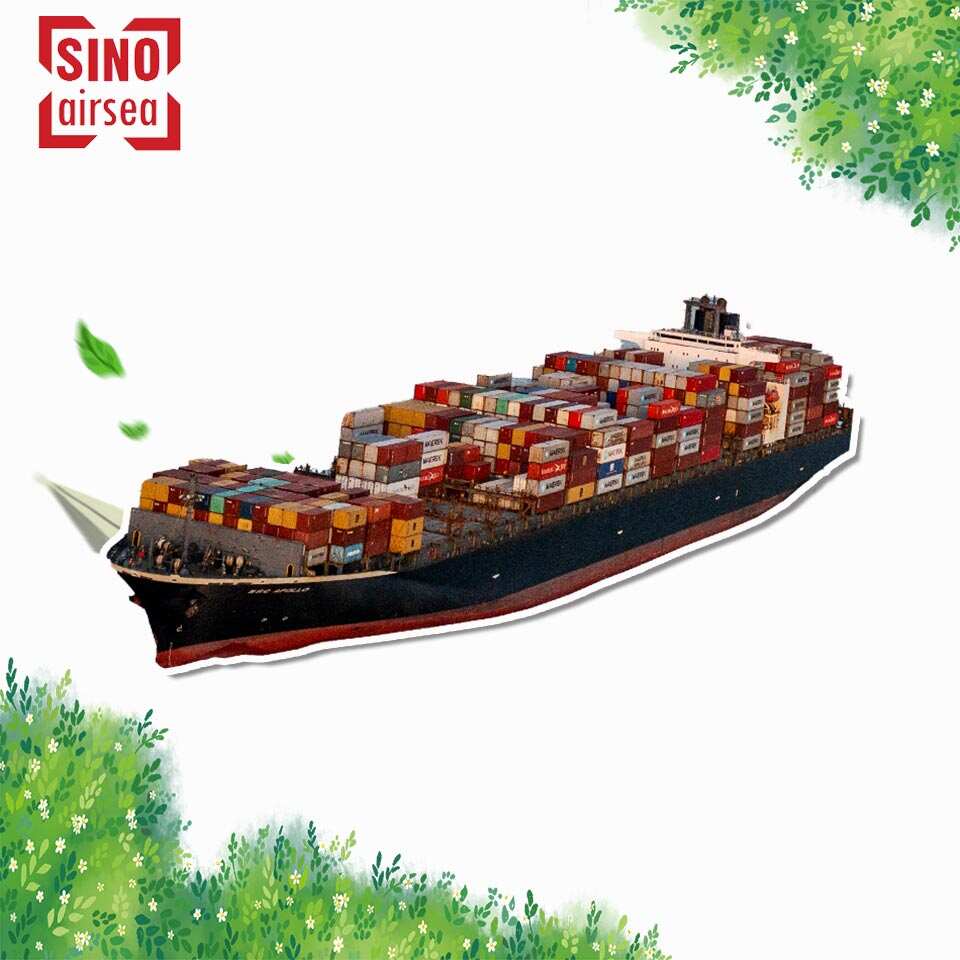Sea Freight & Logistics Solution: The Comprehensive Guide to Streamlining Global Shipping
In today’s interconnected world, businesses are increasingly reliant on global trade and the movement of goods across borders. One of the most crucial components of international commerce is efficient shipping, and more specifically, the use of sea freight & logistics solutions. For businesses looking to optimize their supply chain and reduce costs, understanding the nuances of sea freight logistics is essential. This blog will delve into the various aspects of sea freight solutions, their benefits, and how companies can make the most of these services to ensure smooth and cost-effective shipping.
Introduction to Sea Freight & Logistics Solution
Shipping goods across the globe requires reliable, efficient, and cost-effective transportation options. Sea freight & logistics solutions play a pivotal role in the international transportation of bulk goods, helping businesses connect with markets across continents. Sea freight remains one of the most affordable and widely used modes of shipping, particularly for large volumes. Whether you are shipping electronics, textiles, or raw materials, a solid sea freight logistics strategy can significantly impact your business’s bottom line.
However, navigating the world of sea freight logistics requires a deep understanding of different shipping modes, customs regulations, and how to choose the right service provider.
Key Components of Sea Freight Services
Sea freight logistics isn’t just about loading goods onto a ship and sending them across the ocean. Several critical components must work together to ensure a smooth and successful shipment. Here are the main aspects of any sea freight & logistics solution:
- Port-to-Port Transport: The process of transporting goods from the departure port to the destination port.
- Customs Clearance: This involves preparing and submitting documentation required for exporting and importing goods.
- Cargo Handling: Managing the loading and unloading of goods at ports.
- Tracking and Tracing: Monitoring the movement of cargo to ensure timely delivery.
- Warehouse Storage: Storing goods at various points in the shipping process.
Each of these elements must be managed meticulously to ensure that cargo arrives safely and on time at its destination.
The Role of Freight Forwarders in Sea Logistics
When it comes to sea freight, businesses often work with third-party logistics providers or freight forwarders. Seafreight line forwarders service providers are crucial in helping businesses navigate the complexities of global shipping. They handle everything from booking space on ships to managing customs documentation and ensuring that goods are loaded and unloaded efficiently.
Forwarders act as an intermediary between shippers and carriers, allowing businesses to focus on their core activities while ensuring that their shipments are handled with expertise. For companies looking to streamline their operations, partnering with a reliable freight forwarder can be a game-changer.
Benefits of Sea Freight for Global Businesses
Why should businesses choose sea freight & logistics solutions over other shipping methods? Here are some of the primary benefits:
Cost-Effectiveness
Sea freight is often the most economical option for shipping large quantities of goods, especially over long distances. The ability to transport bulk shipments at lower rates than air freight makes it an attractive choice for many industries.
Capacity for Large Shipments
Ships have the capacity to carry significantly larger loads compared to airplanes or trucks. This makes sea freight ideal for transporting heavy machinery, automobiles, and other large items.
Environmental Impact
Compared to air freight, sea freight has a lower carbon footprint. Shipping by sea is one of the more eco-friendly methods of transporting goods, contributing to global efforts to reduce emissions.
Accessibility
With major seaports located across every continent, sea freight services offer global reach. Businesses can connect with markets virtually anywhere in the world through a robust sea logistics network.
Challenges Faced in Sea Freight & How to Overcome Them
While sea freight offers numerous advantages, it’s not without its challenges. Here are some common issues businesses face and how to overcome them:
Delays and Weather Disruptions
Weather conditions can cause delays in sea freight schedules. To mitigate this, businesses should plan their shipments with buffer times and work with logistics providers that offer reliable tracking services.
Customs and Regulatory Hurdles
Navigating the customs regulations of different countries can be tricky. Partnering with an experienced freight forwarder ensures that all necessary documentation is in order, reducing the risk of customs delays.
Cargo Damage
Goods are at risk of damage during loading, unloading, and transit. Investing in proper packaging and insurance can safeguard against this risk.
Capacity Shortages
At peak times, space on ships can be limited. To avoid disruptions, businesses should plan their shipments well in advance and work with reliable carriers that offer guaranteed space.
Optimizing Your Logistics Strategy with Sea Freight
How can businesses leverage sea freight & logistics solutions to optimize their supply chains? The key lies in integrating sea freight into a broader logistics strategy that takes into account various factors like cost, speed, and reliability.
Multi-Modal Shipping
Combining sea freight with air, rail, or truck transport can help businesses optimize delivery times while keeping costs low. For example, using sea freight for long-haul international shipments and then switching to rail or truck for last-mile delivery can be an efficient approach.
Just-In-Time Inventory Management
Sea freight can be a critical component of just-in-time inventory strategies, allowing businesses to reduce warehousing costs and improve cash flow by receiving goods exactly when needed.
Technology and Automation
Investing in technology like real-time cargo tracking and automated customs documentation can streamline logistics operations, reduce errors, and improve transparency in the shipping process.
Selecting the Right Sea Freight & Logistics Solution for Your Business
Choosing the right sea freight & logistics solution is vital to ensuring smooth operations. Here are key factors to consider:
Reliability and Reputation
Partner with carriers and logistics providers with a proven track record for reliability. Delays in shipping can cause ripple effects throughout your supply chain.
Pricing and Transparency
Ensure that the pricing structure is transparent and that you understand all associated costs, including port fees, customs charges, and surcharges.
Global Network
Choose logistics providers with a strong global network of ports and freight forwarders to ensure your goods can be shipped anywhere in the world.
Customer Service
Responsive customer service is crucial in logistics. You want to work with a provider who can quickly resolve issues and provide regular updates on your shipments.
Future Trends in Sea Freight Logistics
The future of sea freight & logistics solutions is likely to be shaped by technological advancements and environmental concerns. Some emerging trends include:
- Automation: From autonomous ships to automated cargo handling, technology is set to make sea freight even more efficient in the coming years.
- Sustainability: As pressure mounts to reduce carbon emissions, shipping companies are investing in greener technologies, such as using low-emission fuels.
- Data-Driven Decisions: Big data and analytics are helping businesses optimize their shipping strategies by providing deeper insights into transit times, costs, and supply chain performance.
Conclusion
In the globalized world, sea freight & logistics solutions are indispensable for businesses looking to scale and reach international markets. By understanding the intricacies of sea freight logistics, businesses can take full advantage of the benefits, overcome common challenges, and streamline their supply chain for maximum efficiency.
Whether you're a small enterprise just starting to explore global markets or a large corporation seeking to enhance your logistics strategy, sea freight remains a powerful tool in the world of international trade. Investing in the right logistics partners, technology, and strategies will ensure your goods are delivered efficiently and on time, helping your business thrive on a global scale.


